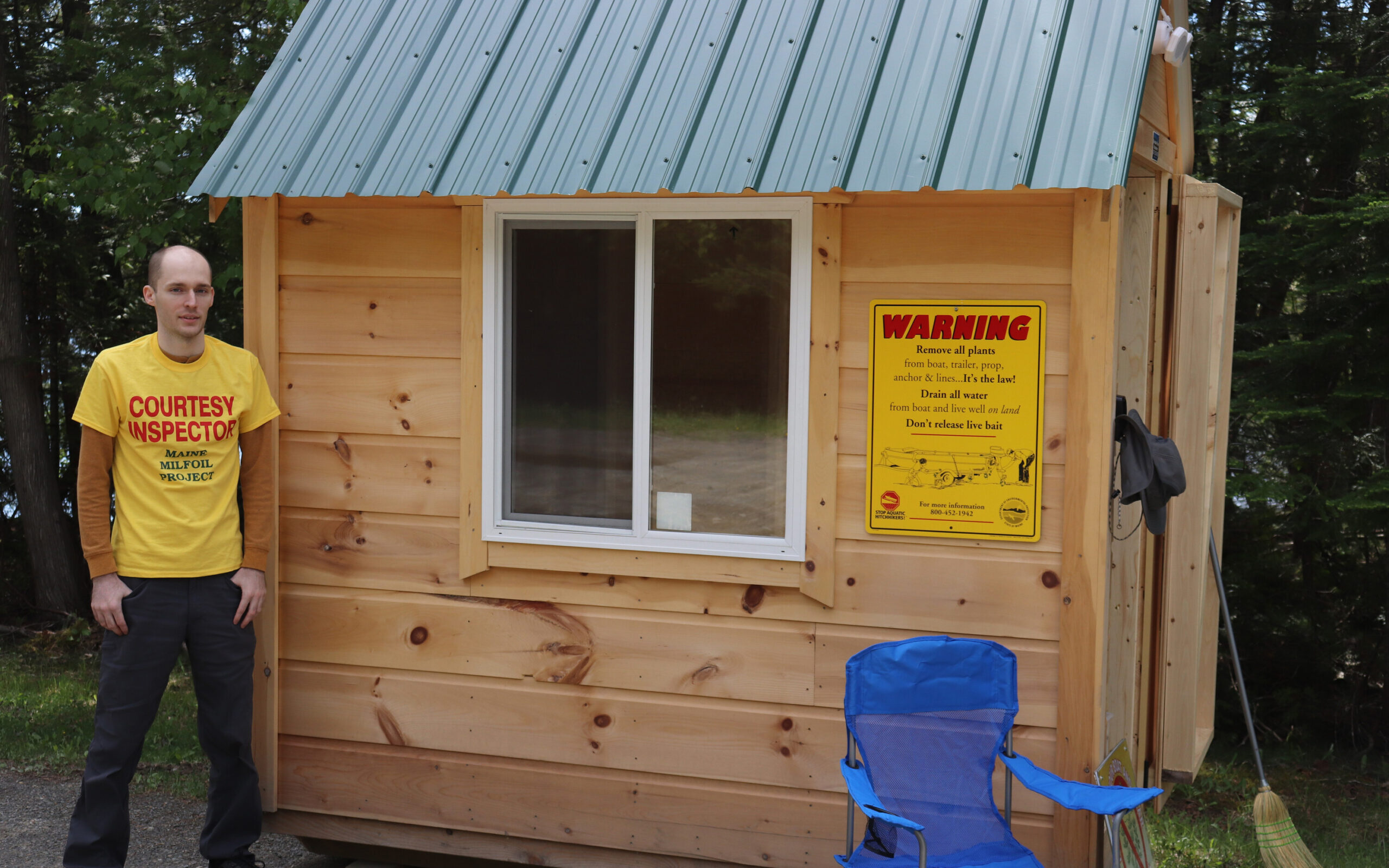
HOULTON, Maine — Nickerson Lake, located 10 minutes outside of Houlton in Aroostook County, is known for its narrow, crescent shape and the pristine clearness of its water.
Nancy Putnam, president of Nickerson Lake Wilderness Prevention Inc., wants to keep it that way — by protecting it from any invasive species that can spread via boat owners who travel from lake to lake during the summer months.
Of particular concern is the spread of milfoil, an aquatic plant that spreads rapidly along lake shores, interfering with recreational activities such as fishing and swimming. It also takes up most of the oxygen in the lake, threatening fish populations. Such infestations can also drive down property values in surrounding lake homes.
Though only a small percentage of Maine’s lakes contain milfoil, Putnam said Nickerson Lake is at risk to become colonized by it. Milfoil has been identified at Big Lake in Washington County, about 80 miles away from Nickerson. A boat owner could spend a summer trip at Big Lake, then move on to East Grand Lake in Danforth, before making their way to Nickerson Lake in Houlton.
“Once a lake is colonized, you can’t get rid of it,” Putnam said. “It’s easy to bring a boat in here and offload it, go somewhere else the next day to enjoy the beautiful Maine waters, and take milfoil from lake to lake.”
The greatest way to prevent such infection is to perform courtesy boat inspections as boats arrive so they are free of any invasive species. While such inspections are voluntary, they can help boat owners avoid any potential fines, as transporting any species of plant on boat, invasive or otherwise, is illegal under Maine law.
To help out with inspections this summer, James Dobbs, a natural resources major at University of Maine at Presque Isle, has been brought on as an intern to help inspect boats arriving at Nickerson Lake’s public boat launch site.
“We have a routine that we go through, starting from the front of the trailer and we work our way back, checking the trailer itself and the side of the boat,” Dobbs said. “We also check the propeller and motor along with fishing tackle anchors and such on the boat.”
Funding for the boat inspection comes from the Maine Department of Environmental Protection, which provides around $700,000 a year annually to lake associations, half going to lakes with invasive species to help reduce their spread, and the other half going to clean lakes to help prevent infection. The money comes from boat registration fees in Maine.
“We did get a modest $1,000 grant [last year]. Next year we’re going to apply for more than that,” Putnam said. “The point is to keep this lake as clean and wild as it was designed.”








